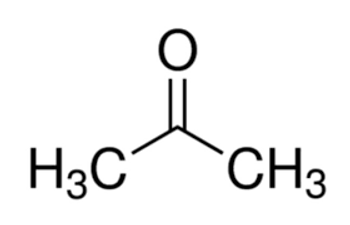Description
Cyclohexane
ACS reagent, ≥99%
Empirical Formula (Hill Notation):
C6H12
CAS Number:
110-82-7
Molecular Weight:
84.16
Beilstein:
1900225
EC Number:
203-806-2
MDL number:
MFCD00003814
eCl@ss:
39010606
PubChem Substance ID:
329751580
NACRES:
NA.21
PROPERTIES
grade
ACS reagent
Quality Level
200
vapor density
2.9 (vs air)
vapor pressure
168.8 mmHg ( 37.7 °C)
77 mmHg ( 20 °C)
Assay
≥99%
form
liquid
autoignition temp.
500 °F
expl. lim.
9 %
impurities
H2SO4, passes test (darkened)
≤0.02% water
evapn. residue
≤0.002%
color
APHA: ≤10
refractive index
n20/D 1.426 (lit.)
bp
80.7 °C (lit.)
mp
4-7 °C (lit.)
density
0.779 g/mL at 25 °C (lit.)
SMILES string
C1CCCCC1
InChI
1S/C6H12/c1-2-4-6-5-3-1/h1-6H2
InChI key
XDTMQSROBMDMFD-UHFFFAOYSA-N
DESCRIPTION
General description
Cyclohexane is a cyclic alkane that predominantly exists in chair conformation due to higher stability.[1] It participates as starting reagent in the photonitrosylation process (PNC process) and affords ε-caprolactum.[2] Its oxidation by employing various oxidants such as hydrogen peroxide, tert-butyl hydroperoxide and molecular oxygen has been reported.[3]
Application
Cyclohexane has been used in the following studies:
- As a solvent in the synthesis of europium dibenzoylmethide triethylammonium (EuD4TEA).[4]
- Preparation of poly(dimethylsiloxane) (PDMS) microchip.[5]
- As a solvent in the two-solvent (cyclohexane/water) deposition method for the preparation of monometallic 5wt% Ni containing catalysts.[6]
Cyclohexane may undergo oxidation using hydrogen peroxide as oxidant and in the presence of a polyoxotungstate catalyst to form cyclohexanone and cyclohexanol as the main products. Its dehydrogenation in the presence of Ni-Cu/SiO2 catalysts forms benzene in good yield.[7]
SAFETY INFORMATION
Signal Word
Danger
Hazard Statements
H225 - H304 - H315 - H336 - H410
Precautionary Statements
P210 - P233 - P273 - P301 + P310 - P303 + P361 + P353 - P331
Hazard Classifications
Aquatic Acute 1 - Aquatic Chronic 1 - Asp. Tox. 1 - Flam. Liq. 2 - Skin Irrit. 2 - STOT SE 3
Target Organs
Central nervous system
Storage Class Code
3 - Flammable liquids
WGK
WGK 2
Flash Point(F)
-4.0 °F - closed cup
Flash Point(C)
-20 °C - closed cup





